The period between the 1950s and 1970s is seen as the “golden age” of Norwegian industry. Industrialisation created prosperity and paved economic foundation for a welfare state (Wikipedia). During this period, Norway extensively developed state-owned (or state-driven) industries. Large-scale development of hydroelectric power stations had played an important role in this development. A quote from the former Prime Minister of Norway Einar Gerhardsen (1897-1987) underlines this positive move to growth and prosperity, “Do not ask what we should use the power for, we just have to build, and the industry will follow” (SNL). In 1965, the power production was four to five times as much as that in 1946. In 1966, American oil companies started test drilling in the North Sea on the Norwegian continental shelf. In 1969, oil was found in the Ekofisk-field and the production from the field started in June 1971. Initially, foreign companies dominated exploration activities and developed the country´s first oil and gas fields. In 1972, Statoil (now Equinor) was established with the state as the sole proprietor, and the principle of 50 percent state participation in each production license was promulgated (Ministry of Petroleum and Energy).
Due to the economic policies initiated by Gerhardsen’s government, the Norwegian society went through major structural changes. Employment in agriculture, forestry and fishing industries decreased severely; employment in manufacturing and oil industries increased; especially the employment in services increased significantly. Following this, the country went through a boom of constructing public and administrative buildings. This again had consequences for the architects and landscape architects in the country. They got new tasks. Norwegian landscape architects were firstly involved in large landscape interventions and nature impact assessments related to the development of hydroelectric power stations. Then, they were also involved in planning and realising large-scale buildings of public administrations. More and more practitioners confidently called themselves ‘landscape architects’, which marked the start of a new age for the discipline.
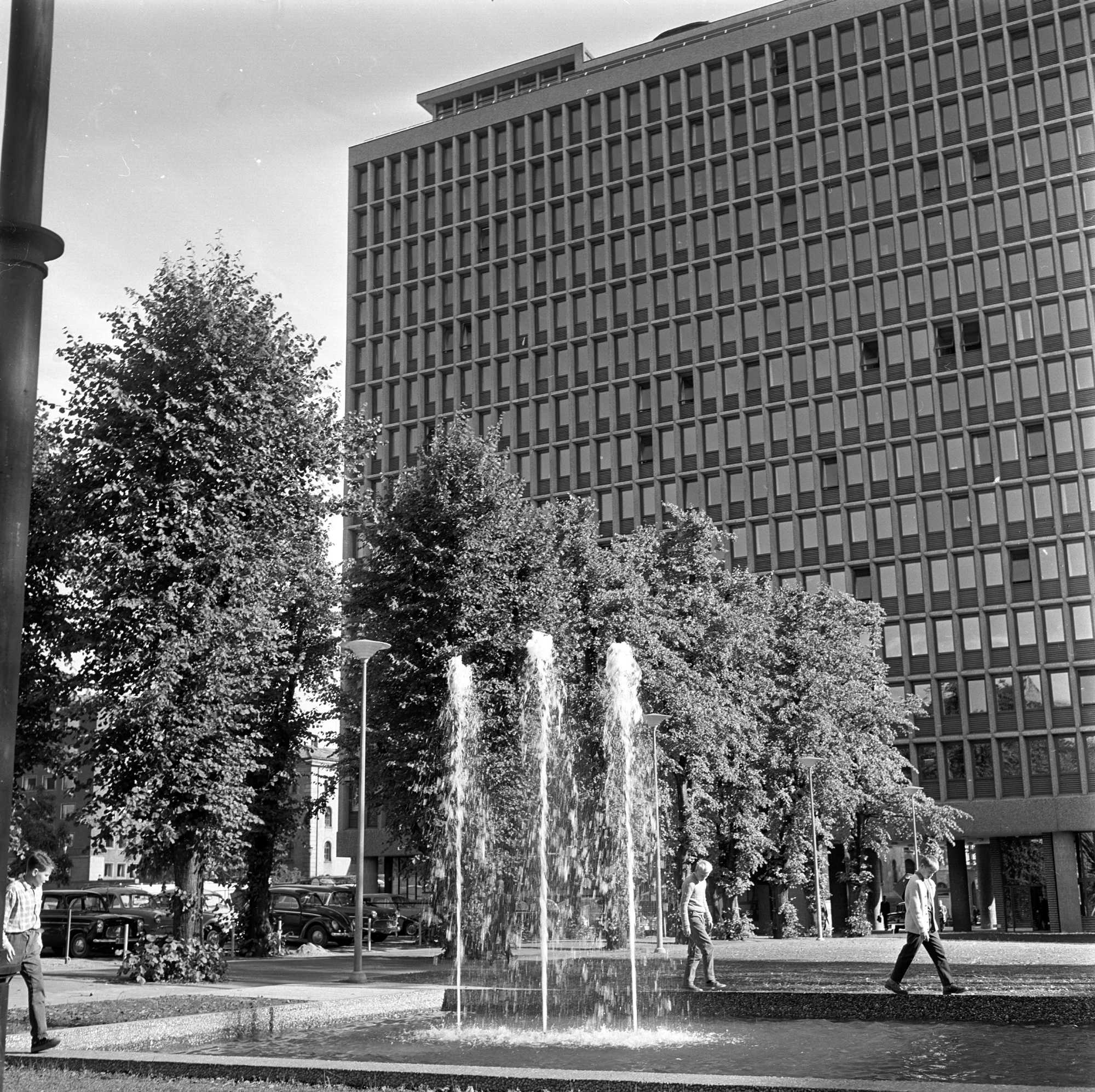 The Government quarter (picture from 1962) was built in this period, public space designed by Grindaker & Gabrielsen (Collection Norsk Folkemuseum)
The Government quarter (picture from 1962) was built in this period, public space designed by Grindaker & Gabrielsen (Collection Norsk Folkemuseum)
The collection of Morten R. Grindaker contains some of the major works in Norwegian landscape architecture from this period. Here you can find the project of public space of the Government quarter in Oslo (Regjeringskvartalet), several park projects connected to the buildings for national authorities such as Social Security Administration (Rikstrygdeverket), the directorate of Norwegian Water Resources and Energy Directorate (NVE) and the headquarters of Norsk Hydro (Hydroparken). Moreover, you can also find large national and international exhibition projects, such as the Norwegian contribution to the International Garden Exhibition in Hamburg in 1963 and the National Garden Exhibition in Frogner Park in 1965.
Morten R. Grindaker was trained as a gardener. He and his brother Hans Grindaker had established their own landscaping company Brødrene Grindaker (Grindaker brothers). In 1950, Morten R. Grindaker entered the Norwegian Agricultural College (NLH, now Norwegian University of Life Sciences NMBU) to study garden art and graduated in 1953. When he was a student, he participated in several architectural competitions such as Nesparken in Moss in 1951. After graduation in 1953, Morten R. Grindaker worked in collaboration with several most prestigious architectural offices for wealthy clients to design residential suburb gardens. In 1960, he started working with Egil Gabrielsen (1933-98) in the practice Grindaker & Gabrielsen (Jørgensen 2011). From 1966 Grindaker took a break from landscape architecture practice and taught at the Gardener School Jensvoll. He also worked as the State Cemetery’s consultant (Statens kirkegårdskonsulent) between 1970-1978, the position that Pål Sæland (1897-1979) and Karen Reistad (1900-1994) had taken earlier. In 1978 he founded the office Fosså and Grindaker ASª and continued to undertake different types of landscape architecture projects. The company was one of the largest at that time in Norway.
Grindaker himself said that he learned a lot from collaborating with architects and artists at the start of his career. In 1957, Grindaker started the collaboration with the architect Erling Viksjø (1910-71) in the project Government quarter (Regjeringskvartalet). The Norwegian government decided in the early 1950s to place the new governmental buildings in the heart of a historical area with buildings in the Empire Style. The design was based upon the competition entry of Viksjø in 1936. Although the decision caused many protests from local societies, Oslo municipality and cultural heritage authorities, it was carried out and the demolition of the historical area started in 1954. When designing the public spaces connected to the Government quarter, Grindaker followed some of the historical traces, incorporated the former alley of the historical area into the new plans, and designed a new and functionalistic public space around the alley.
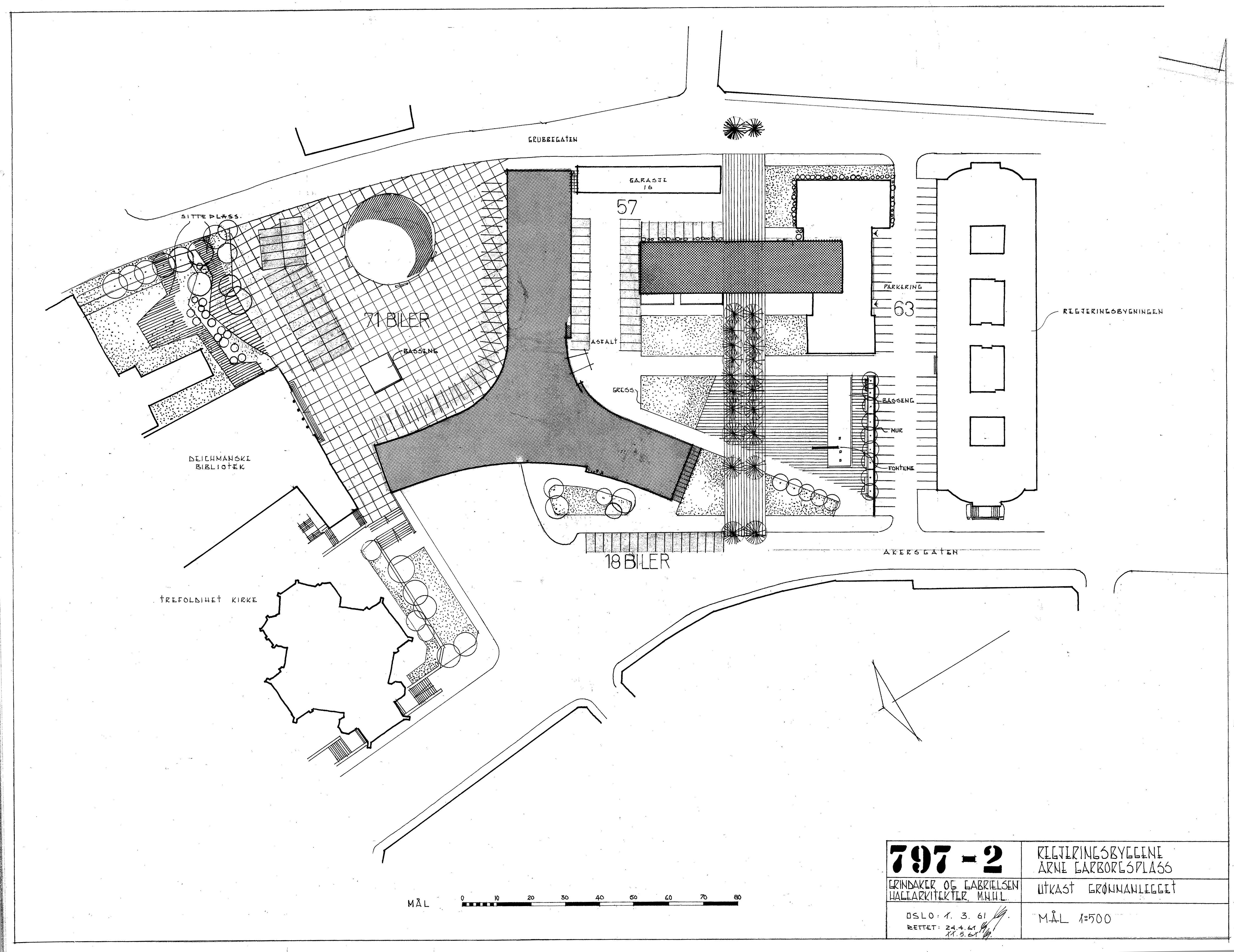 Proposal of Grindaker & Gabrielsens for the public space in the Government quarter 1961 (ILA archive)
Proposal of Grindaker & Gabrielsens for the public space in the Government quarter 1961 (ILA archive)
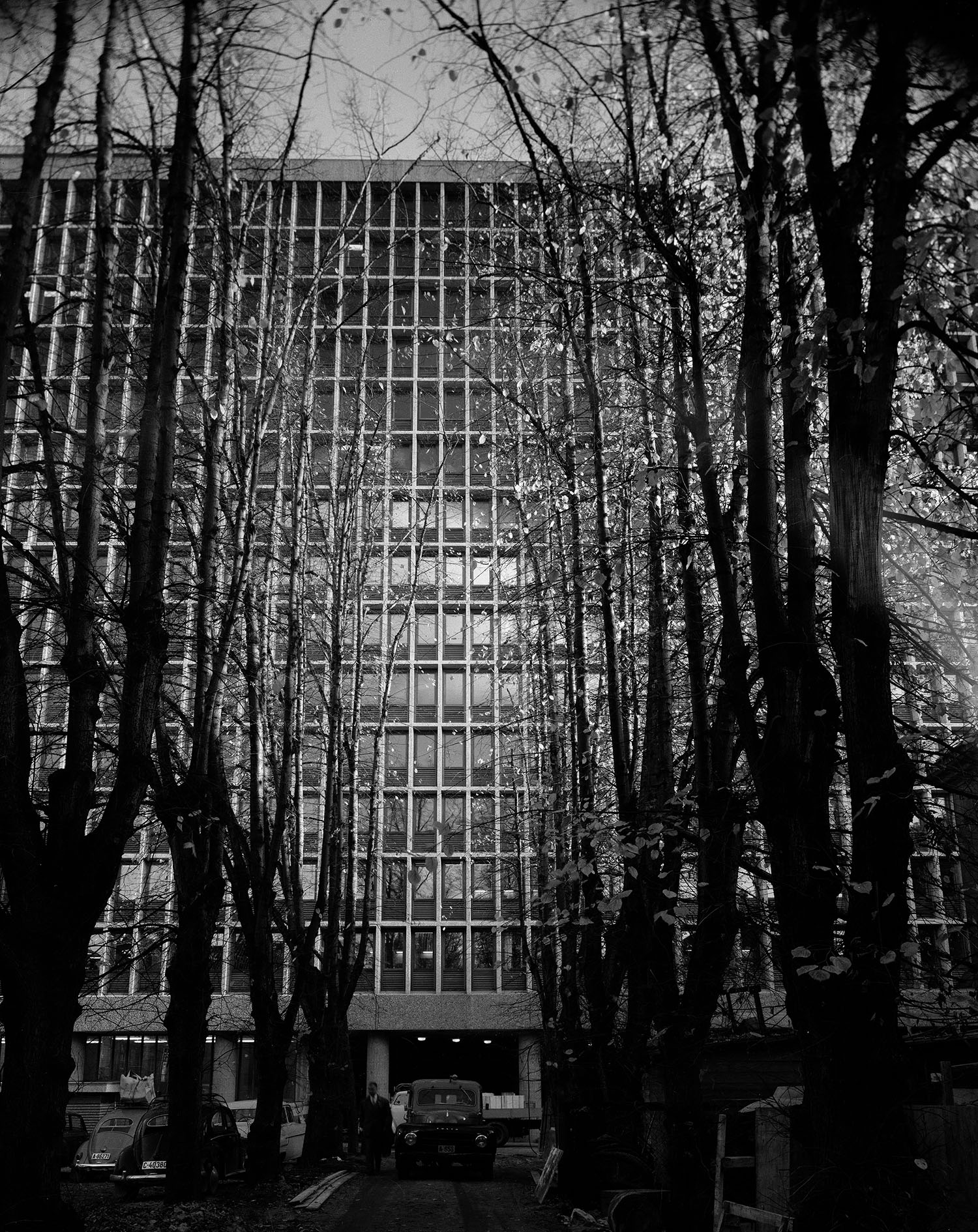 Government quarter with the main building. Grindaker & Gabrielsen incorporated the former alley of the historical area into the new plans. Picture taken around 1958 (Collection Norsk Teknisk Museum)
Government quarter with the main building. Grindaker & Gabrielsen incorporated the former alley of the historical area into the new plans. Picture taken around 1958 (Collection Norsk Teknisk Museum)
 Proposal for the pond in front of the building. Grindaker & Gabrielsen (ILA archive)
Proposal for the pond in front of the building. Grindaker & Gabrielsen (ILA archive)
Grindaker & Gabrielsen and Viksjø continued working together in several projects. In 1960, they collaborated in the project the headquarters of Elkem in Middelthunsgata no. 27 in Oslo. This project was followed with the park plan in no. 29, where the Norwegian Water Resources and Energy Directorate (NVE) built its headquarters in 1964. The architects of this building were F. Lykke-Enger and K. Enger. Today, NVE is still located in the same place, while no. 27 is the Confederation of Norwegian Enterprise (NHO).
From 1960 to 1963, Grindaker & Gabrielsen worked on the park surrounding Norsk Hydro’s new 14-storey administration building designed by Viksjø. Here he also collaborated with Odd Tandberg (1924-2017) who decorated the stone walls in this park. This project received international reputation and probably helped Grindaker receive the following national and international projects.
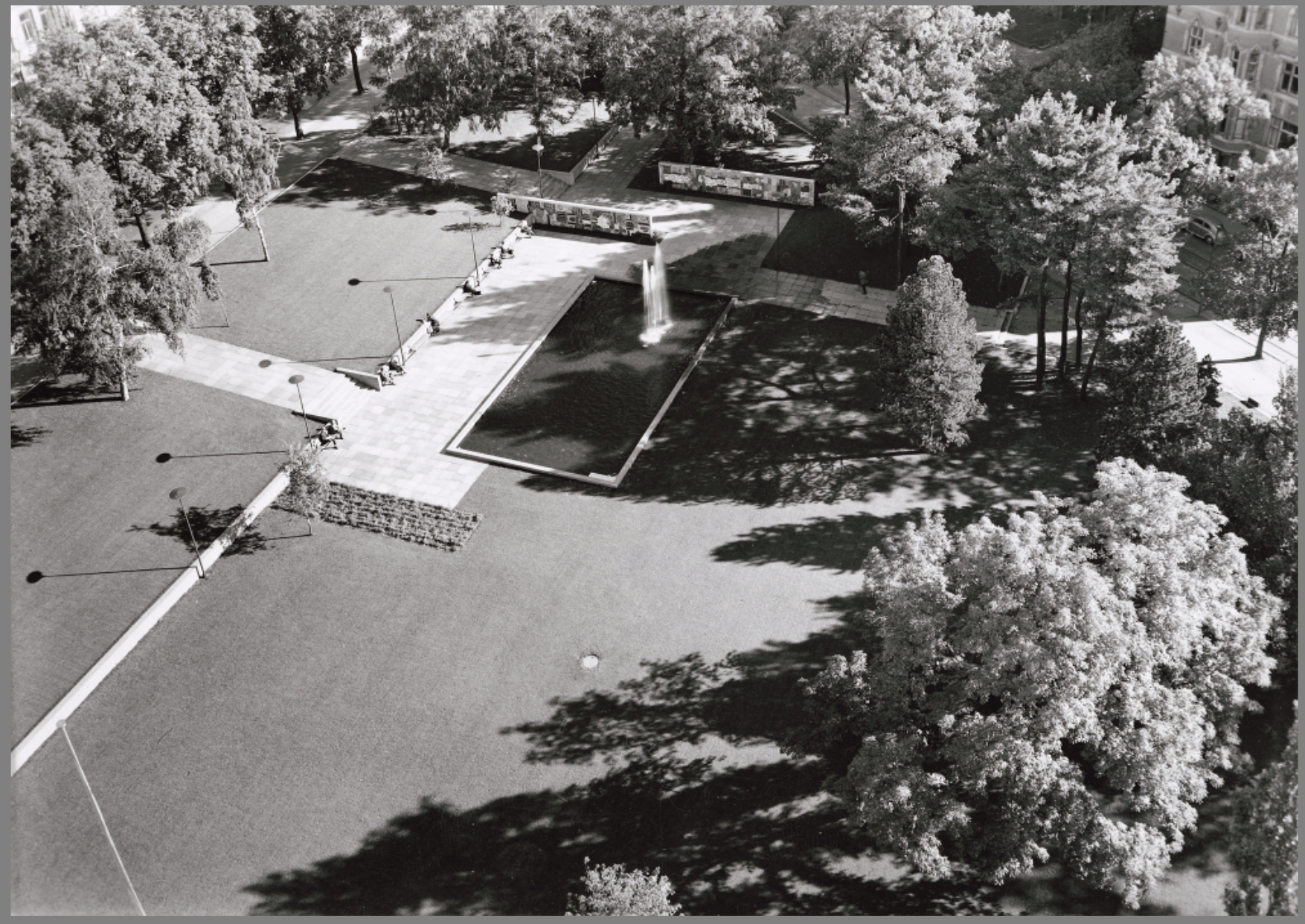 Hydroparken between 1960-1965 (Collection Nationalmuseet – Arkitektur)
Hydroparken between 1960-1965 (Collection Nationalmuseet – Arkitektur)
In 1963, Grindaker & Gabrielsen represented Norway in the International Garden Exhibition in Hamburg, IGA.
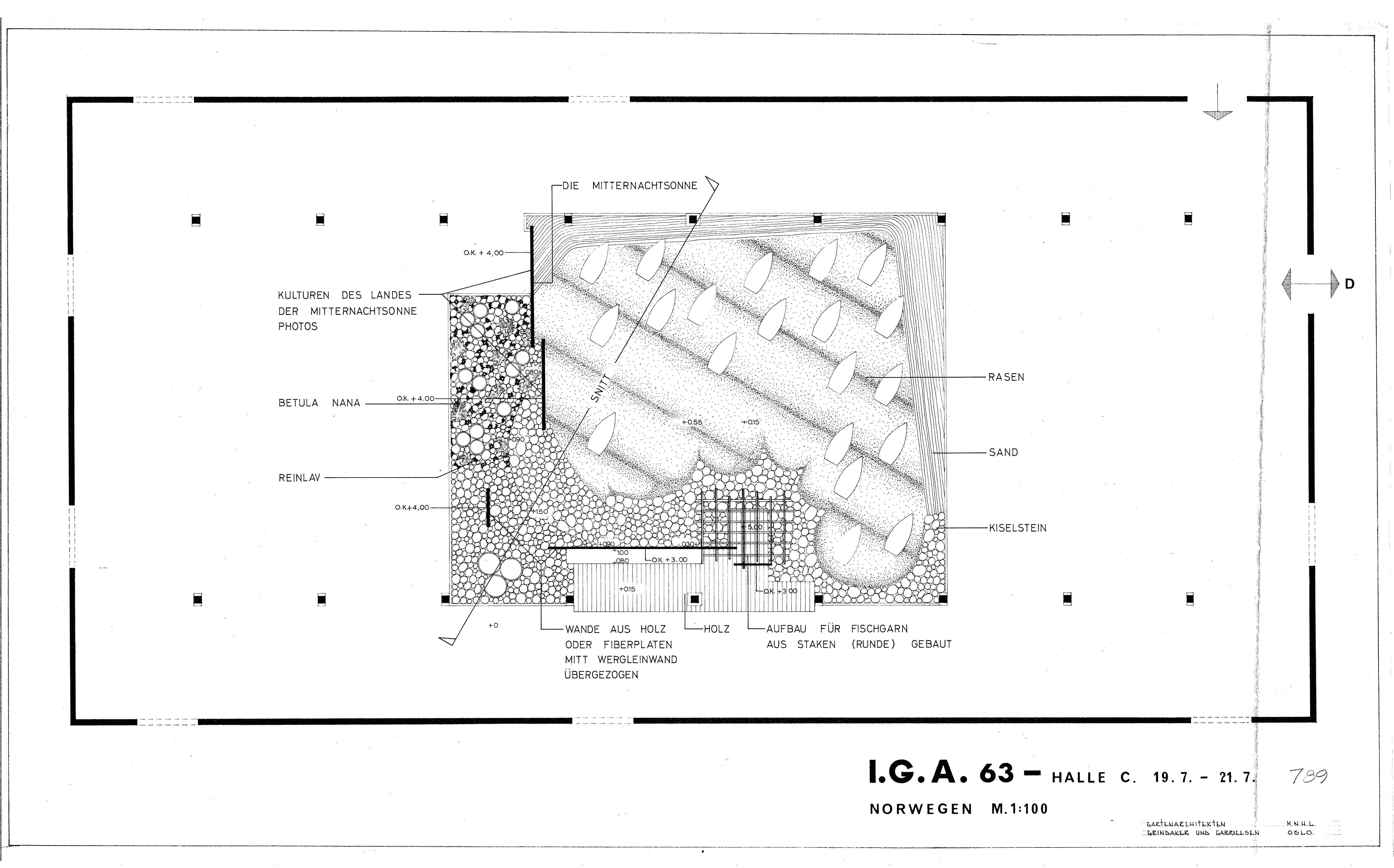 Proposal for IGA Hamburg in 1963. Main plan (above) and sketch (below). Grindaker & Gabrielsen 1963 (ILA archive)
Proposal for IGA Hamburg in 1963. Main plan (above) and sketch (below). Grindaker & Gabrielsen 1963 (ILA archive)
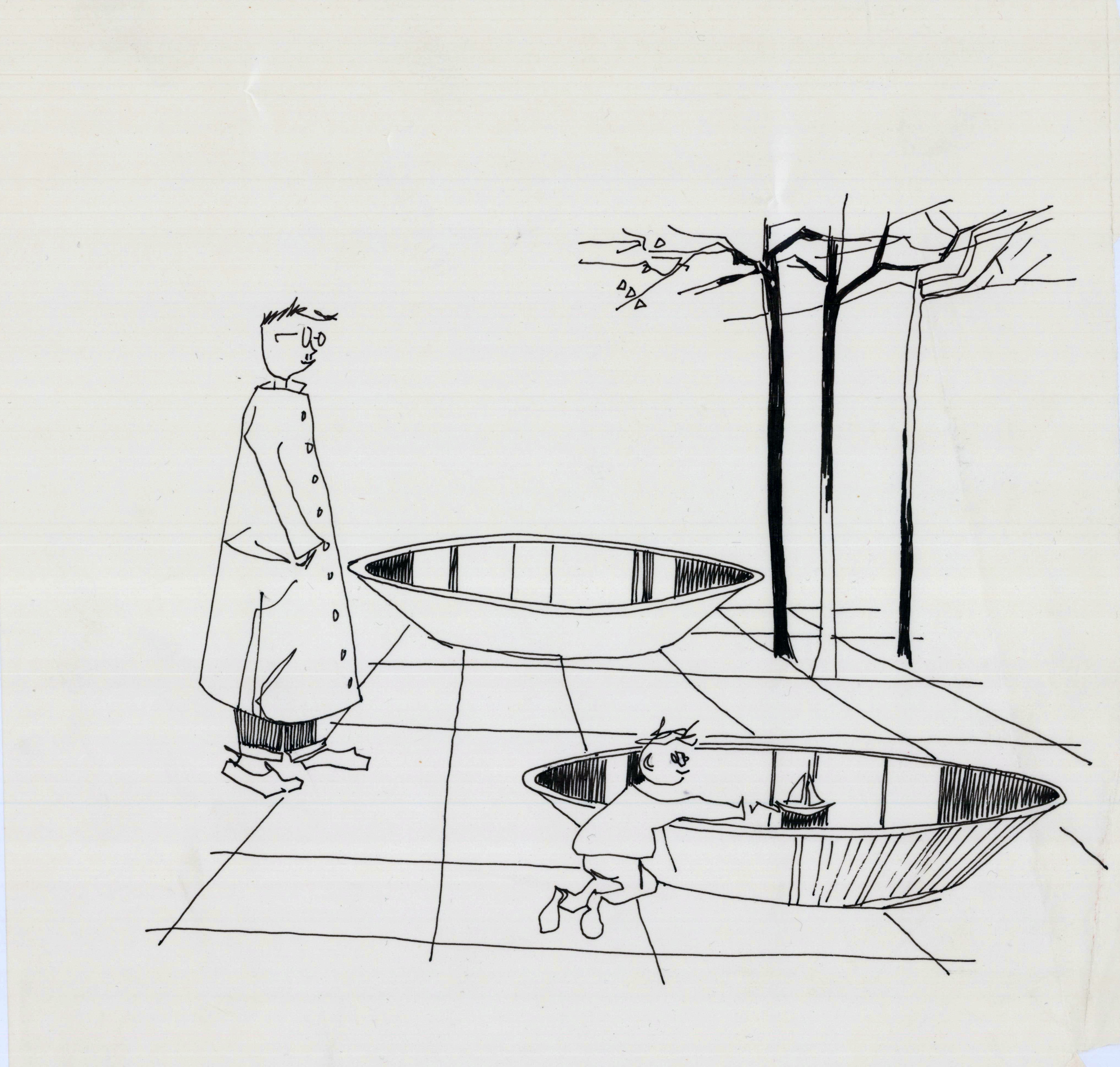
Another interesting contribution was the master plan for the Garden Exhibition in Frogner, Oslo in 1965.
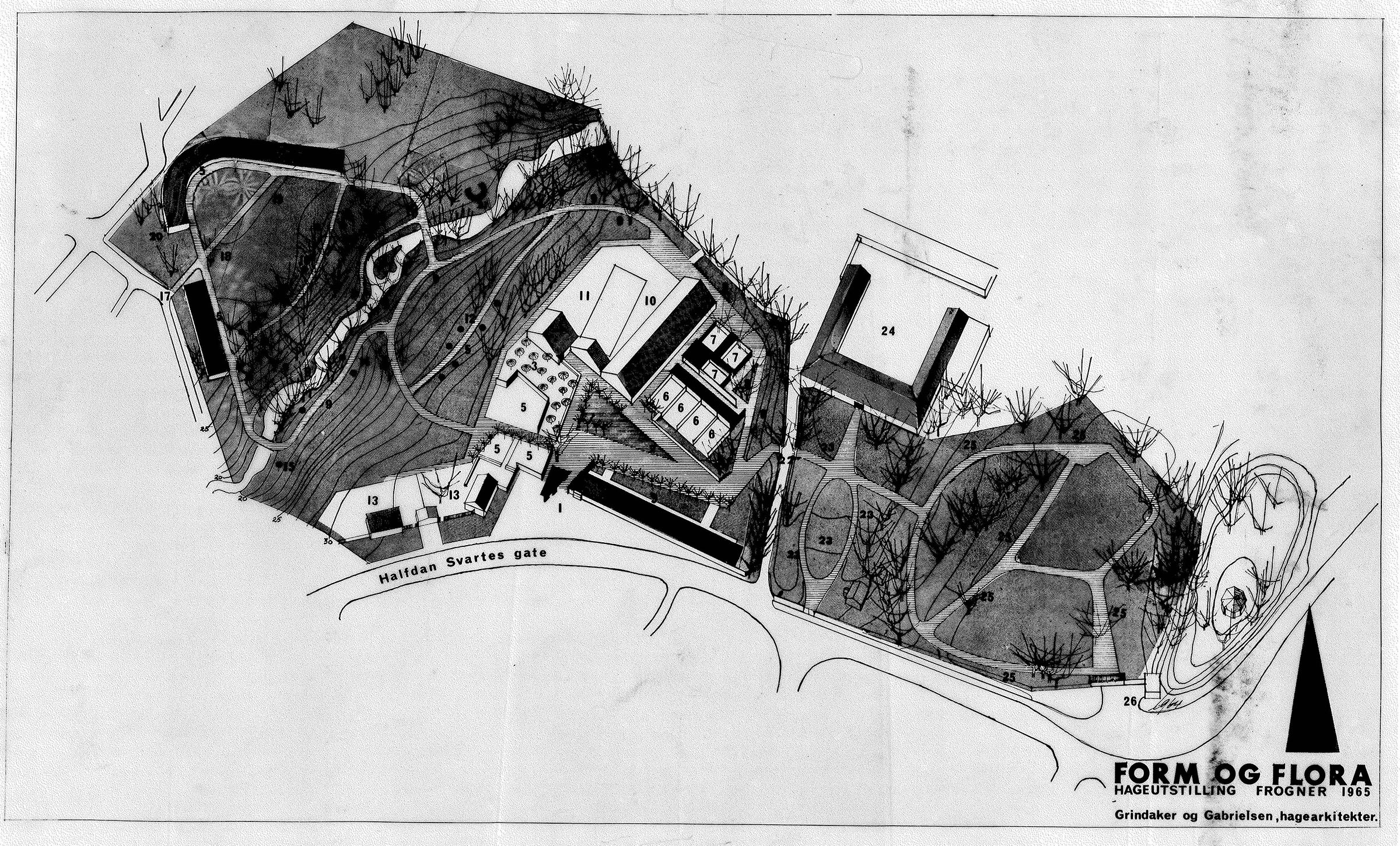 Masterplan for the garden exhibition in Oslo “Form and Flora” 1965. Grindaker & Gabrielsen (ILA archive)
Masterplan for the garden exhibition in Oslo “Form and Flora” 1965. Grindaker & Gabrielsen (ILA archive)
The collection of Morten R. Grindaker includes also a wide range of private villa gardens from the early 1950s and onwards. Some projects were designed in his study period at NLH. Morten used Brødrene Grindaker, the company he co-founded with his brother, to realise his early projects.
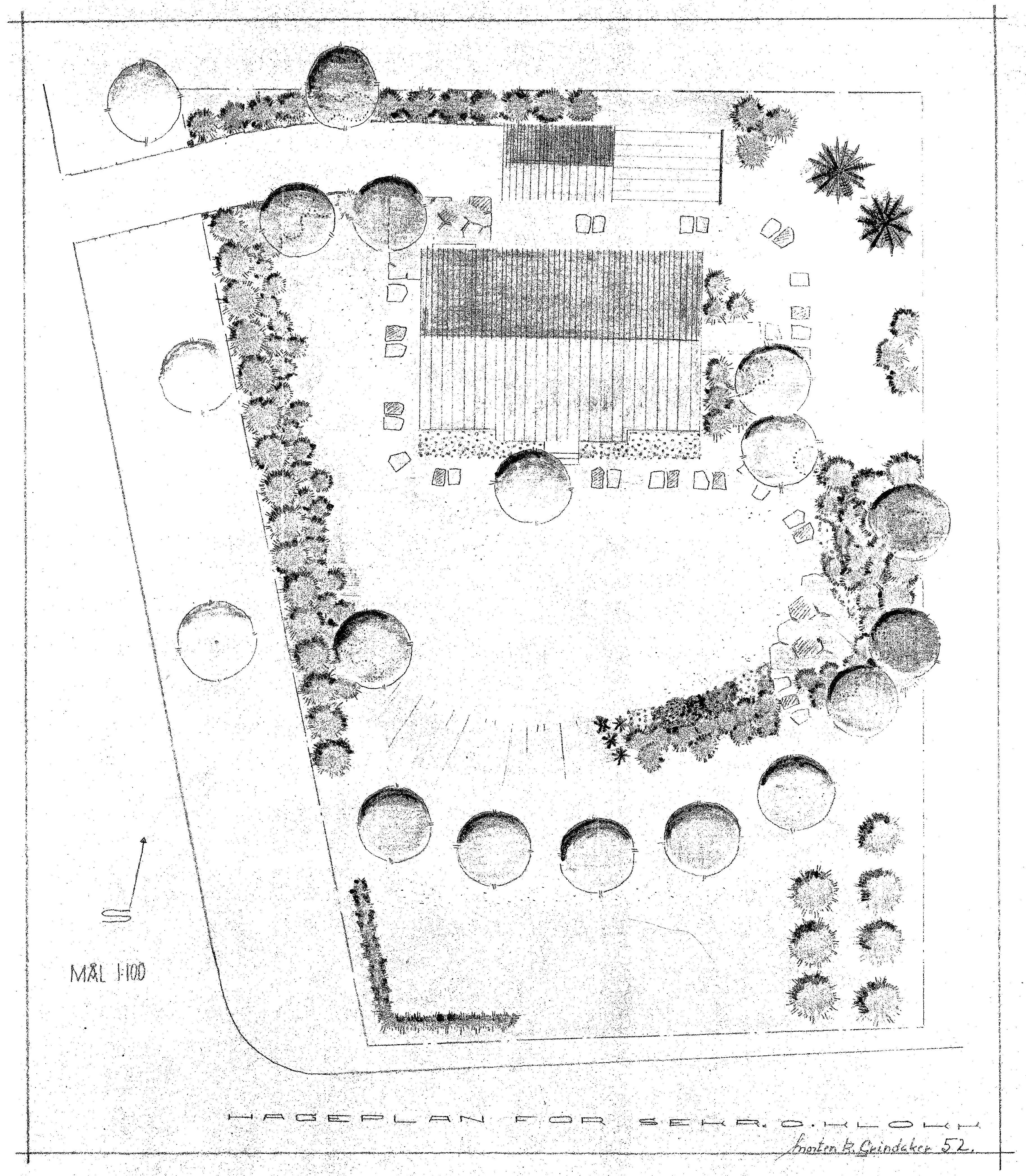 Very early proposal for a private garden, 1952 (ILA archive)
Very early proposal for a private garden, 1952 (ILA archive)
 Proposal for a villa garden in Grimelundsveien from 1962 (ILA archive)
Proposal for a villa garden in Grimelundsveien from 1962 (ILA archive)
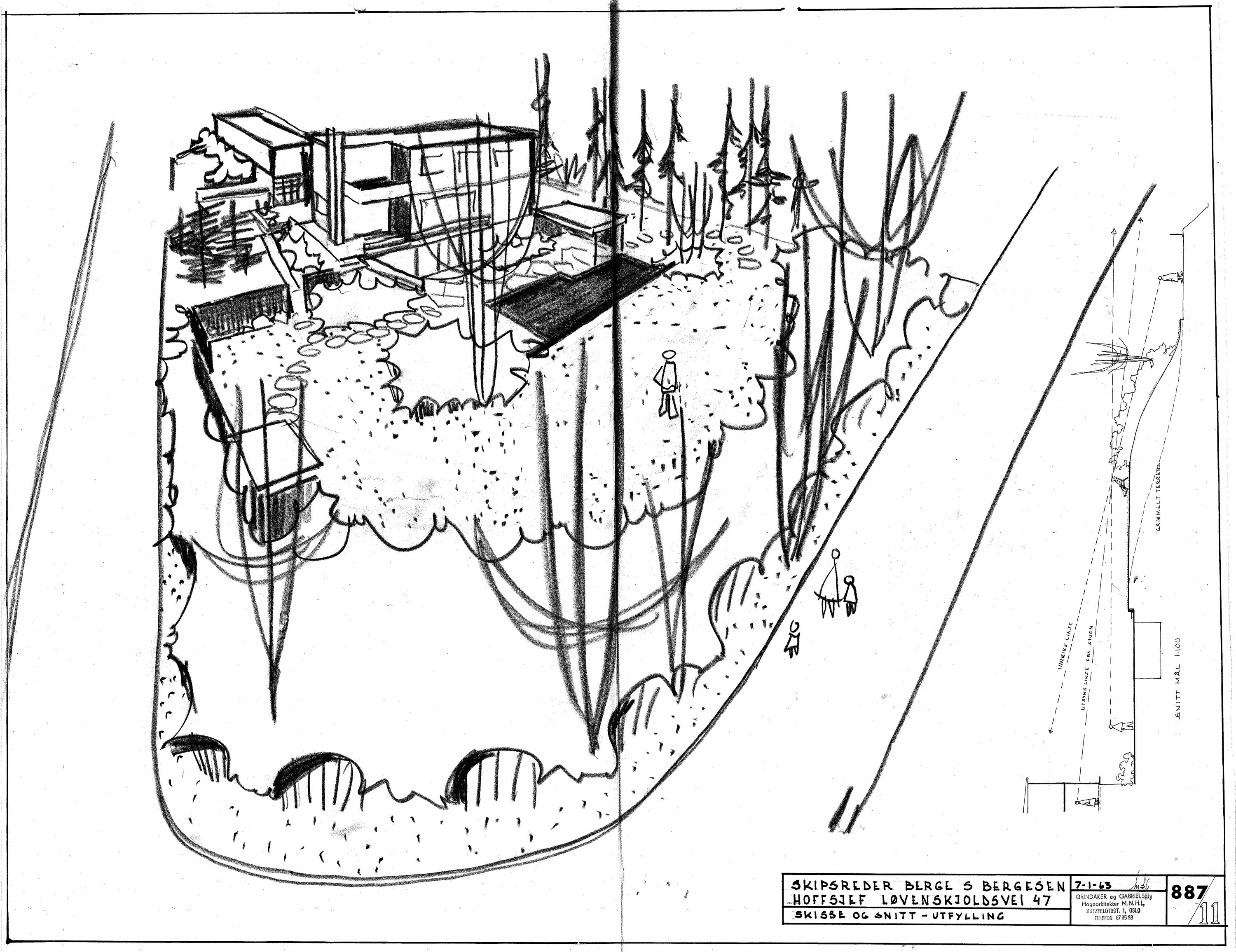 Sketch for a private garden in Oslo 1963 (ILA archive)
Sketch for a private garden in Oslo 1963 (ILA archive)
Morten R. Grindaker’s practice and engagement with the discipline had a large impact on Norwegian landscape architecture and the development of the profession. Between the 1960s and the 1980s, some of the leading landscape architects, such as Toralf Lønrusten (1936-2014) and Bjarne Aasen (1933-), started their career in Grindaker’s office. In addition, Grindaker encouraged talented gardeners to continue their education at NLH to become garden architects.
ª The company changed the name to Grindaker-Lunde-Orre-Flugsrud AS from 1986-1992 and to Grindaker AS again from 1992.
References:
K. Jørgensen: “Landscape architecture in Norway: a playful adaptation to a sturdy nature”. Web, www.researchgate.net [April 2011].
Ministry of Petroleum and Energy. “Norway’s oil history in 5 minutes”. Web [December 2018].
https://www.regjeringen.no/en/topics/energy/oil-and-gas/norways-oil-history-in-5-minutes/id440538/
SNL-Store Norske Leksikon. “Norge i etterkrigstiden”. Web [December 2018].
https://snl.no/Norge_i_etterkrigstiden
Wikipedia. “Norge i etterkrigstiden”. Web [December 2018]. https://no.wikipedia.org/wiki/Norge_i_etterkrigstida

Permalink